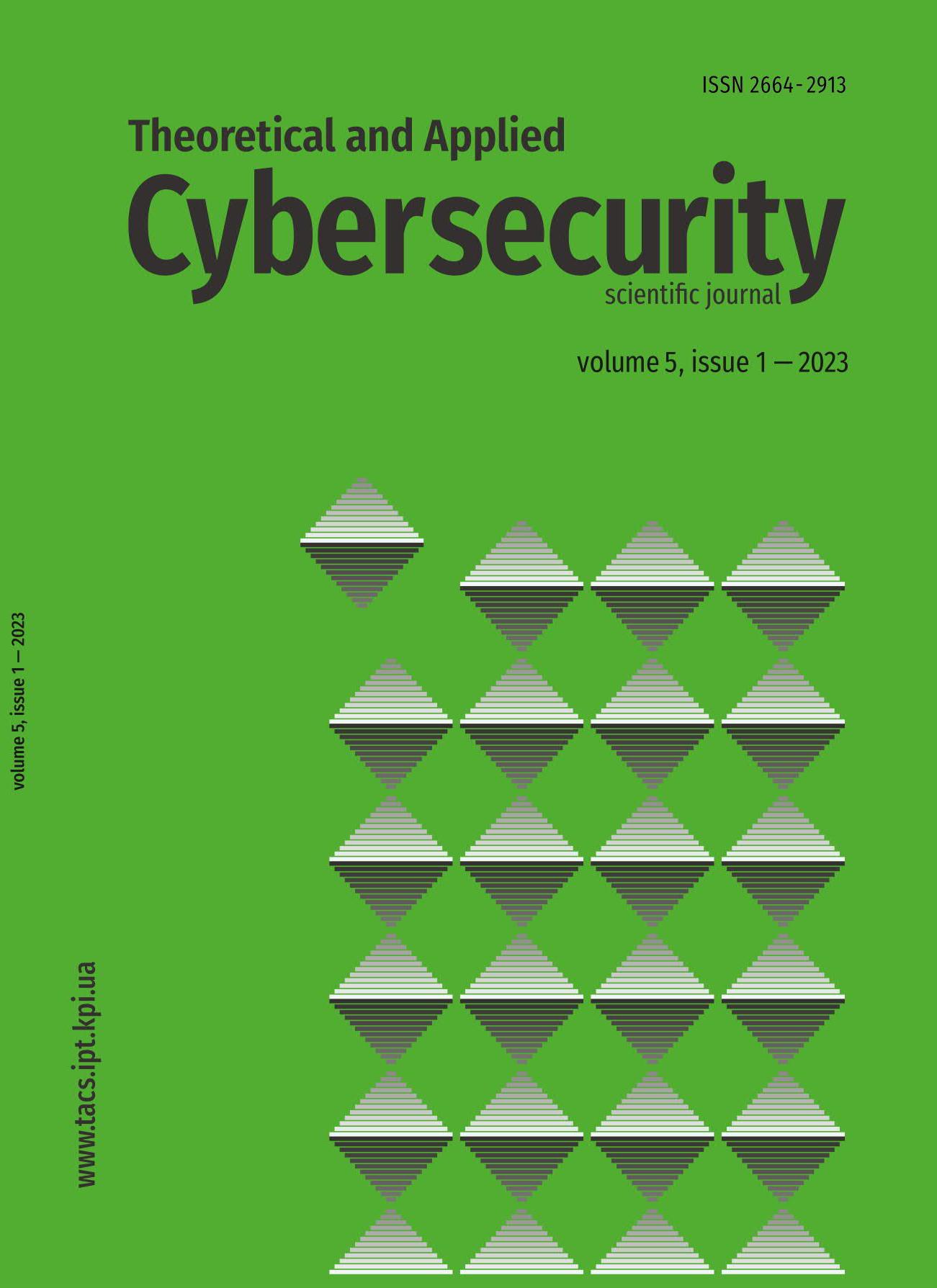System construction of cybersecurity vulnerabilities with Q-analysis
DOI:
https://doi.org/10.20535/tacs.2664-29132023.1.285430Abstract
Today, in order to assess potential cyber threats, it is necessary to conduct a comprehensive assessment of the vulnerabilities of the investigated system. To do this, it is necessary to describe the identified vulnerabilities and consider potential vulnerabilities. In addition, the relationship between system vulnerabilities must be properly assessed. The most common assumption is that all vulnerabilities are independent and are implemented either by random events or by malicious intent. The paper proposes a method that allows modeling the vulnerabilities of complex systems as a whole, taking into account their hidden connections. Q-analysis [2] was used to study the structure of the system of interconnected vulnerabilities that arise in the process of project implementation. An example of the application of Q-analysis methods is presented and an explanation of the nature and impact of some potential threats and their combinations is offered.
Downloads
Published
Issue
Section
License
Authors who publish with this journal agree to the following terms:
Authors retain copyright and grant the journal right of first publication with the work simultaneously licensed under a Creative Commons Attribution License that allows others to share the work with an acknowledgement of the work's authorship and initial publication in this journal.
Authors are able to enter into separate, additional contractual arrangements for the non-exclusive distribution of the journal's published version of the work (e.g., post it to an institutional repository or publish it in a book), with an acknowledgement of its initial publication in this journal.
- Authors are permitted and encouraged to post their work online (e.g., in institutional repositories or on their website) prior to and during the submission process, as it can lead to productive exchanges, as well as earlier and greater citation of published work (See The Effect of Open Access).

